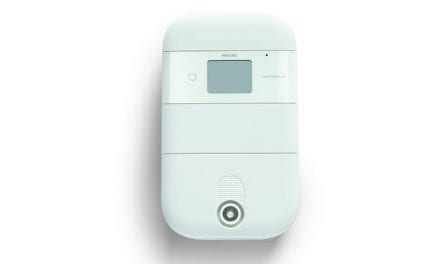Sleep medicine tends to focus on the first 90 days of CPAP adherence, observes Adam Benjafield, PhD, vice president of medical affairs at ResMed. While that initial adherence is very important, a similar focus doesn’t exist with regards to continued adherence, he says, despite long-term therapy use being key for better quality of life and reduced mortality rates.
So a new ResMed-funded retrospective study explores a potential factor of long-term adherence: mask resupply programs. The study, published in an online supplement of the journal Sleep and to be presented at SLEEP 2018, found that patients who enrolled in a program that replaced their mask systems and/or cushions on a regular schedule had increases in average daily device usage and a reduced therapy drop-out rate compared to patients who did not sign up.
“We expected that mask resupply would have a positive impact on PAP adherence, but not to the extent that we saw in the study,” says study coauthor Benjafield. “At ResMed, we’ve seen time and again how automating features improves patient and HME [home medical equipment] use. Similarly, automating resupply helps ensure that more patients will receive fresh PAP mask supplies and, as the results show, sleep longer on PAP therapy each night and be less likely to terminate therapy within the first year.”
For the period from day 91 to day 360, mean device usage in the study was 5.6 hours a night in the resupply group versus 4.5 hours a night in the control group. Patients in the resupply group had a therapy termination rate at 1 year of 11.0% versus 26.6% in the control group.
Patients who participate in resupply programs usually do so via their HME supplier following diagnosis. According to Benjafield, most are made aware of such programs by their clinician and simultaneously alerted to the importance of new masks and parts. The patients who did not sign up for the programs were not asked why in this study, but there is past data that sheds light on common reasons. “A nationwide third-party study commissioned by ResMed in 2015 found that two-thirds of non-frequent resuppliers (ie, patients who, on average, haven’t replaced their mask or cushion for 13 months) weren’t aware of the option to enroll in a resupply program, but more than half said they would have liked the choice, Benjafield says.
“Patients are more inclined to adhere to their therapy when they have new, clean equipment. By automatically replacing masks or cushions on a regular basis, resupply programs remove the patient’s concern that their equipment isn’t of optimal quality, which often hinders people from compliance. These programs also act as a healthy reminder for patients; when equipment arrives regularly it can prompt users to re-adhere to their PAP treatment,” Benjafield says.
Though the sleep medicine clinician team that diagnoses the patients typically do not determine whether patients are enrolled in resupply programs, since such programs are typically the purview of the HME provider, Benjafield says every stakeholder should be aware of the benefits, so they can pass that knowledge on to their patients and encourage them to seek out and enroll in these programs. He adds that establishing that this automation can improve long-term PAP adherence will “hopefully raise HMEs’ priority to implement similar resupply programs on a larger scale.”
Sree Roy is editor of Sleep Review.




